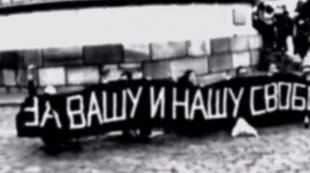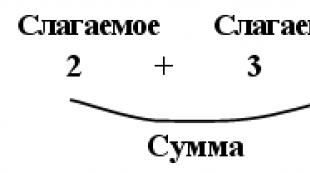Student's Day is an international holiday. International student's day. How International Students' Day is Celebrated in America
(International Students "Day) is celebrated on November 17. It was established in 1941 in London (Great Britain) at an international meeting of students from countries that fought against fascism. The date was set in memory of Czech students - heroes of the Resistance.
On October 28, 1939, in Nazi-occupied Czechoslovakia (at that time it was called the protectorate of Bohemia and Moravia, now the Czech Republic), Prague students and their teachers marched to mark the anniversary of the founding of the Czechoslovak state - October 28, 1918. The units of the occupiers dispersed the demonstration, and fire was opened on its participants. One of the student leaders, Jan Opletal, was seriously injured and died soon after.
His funeral on November 15, 1939, again escalated into a protest. In response, the Nazis closed all Czech universities, over 1,200 students were arrested and imprisoned in a concentration camp in Sachsenhausen. Nine students and student movement activists were executed without trial in the dungeons of a prison in Prague's Ruzyne district on November 17. By order of Hitler, all Czech universities were closed until the end of the war.
The first International Students Day was celebrated in 1941.
International Students' Day is especially celebrated in Greece, where the holiday is called Polytechnic. This day marks the anniversary of the student protest against the military junta in 1973. Then the students, entrenched in the Polytechnic University, announced a fight against the government and began broadcasting their own radio station. Tanks were put forward against the students. 24 people were killed, thousands were injured and arrested. The junta lasted less than a year, and the democratic government that came to power declared the victims of the uprising martyrs, instituting a public holiday.
In addition to International Students Day, many countries have their own student holiday.
In the United States, one of the funniest and most ambitious holidays is held at Harvard University every February. The theatrical Hasty Pudding is named after the food traditionally brought to student club meetings since 1795. This holiday is held in the form of a carnival with a costume parade. Only men take part in it, who perform both female and male roles.
English students have a week called Rag Week. These days, costume parades, sports races in bars, various jokes and practical jokes, racing through the streets on horseback on beds or a speed competition between rubber ducks are welcome. With all this fun, students collect money for charity.
In Portugal, in Porto and Coimbra, a big Keima student festival takes place in May. It begins at midnight with loud public chanting of serenades at the monument to one of the Portuguese kings. Musical groups perform in the city park. The culmination of the holiday is a solemn procession of students across the city. University students dress in their uniforms, hold sticks in their hands with ribbons tied to them. A church service is held at the stadium, after which the ribbons of each university are solemnly burned (another name for this holiday is "ribbon burning").
Students in Bulgaria celebrate their holiday on December 8th. This date is associated with the history of the University named after Clement of Ohrid (saint educator, lived in the city of Ohrid, one of the students of Cyril and Methodius). In 1903, when Sofia University was the only higher educational institution in Bulgaria, the academic council at the university decided to declare December 8 as a university holiday. According to the church calendar, it is then that the day of this saint is celebrated. After 1944, when Bulgaria was occupied Soviet troops, the date of the student's holiday was postponed to November 17 (International Students Day), but in 1962, on the occasion of the 80th anniversary of Sofia University, the previous date was returned. On this day, higher education institutions throughout Bulgaria are closed.
In Russia, students celebrate their holiday on Tatiana's Day (January 25) - the day of the Great Martyr Tatiana, who is considered the patron saint of all students. On this day in 1755, Empress Elizaveta Petrovna signed a decree on the opening of Moscow State University.
The material was prepared on the basis of information from RIA Novosti and open sources
Holidays are invariable companions of people's life. Holidays for us are an opportunity to bring joy to our loved ones! And, of course, a holiday is not a calendar concept, it happens where it is felt, where it is expected. Much has changed in our lives in recent years, but people's craving for the holidays remains an important phenomenon of any person.
International Students Day was established on November 17, 1946 at the World Congress of Students, held in Prague, in memory of Czech patriotic students.
International Students' Day is a great occasion to look at the page of history.
Inception higher education in our country dates back to the era of Peter I. The first in Russian Empire the scientific and educational center, according to his plan, was to include the University and the Academy. In the decree of the emperor of January 28, 1724, it is said: "We need civic people who partly know the humanity and have some small art of philosophy and mathematics."
Thanks to Peter, a vocational education system emerged in Russia. In 1701, navigation, pushkar, hospital, order and other schools were created, which were under the jurisdiction of the relevant state bodies. In addition, by 1722, 42 so-called "digital schools" were opened in different cities of Russia, providing primary education in mathematics. Humanities education was provided by theological schools, teachers for which were trained by the Slavic-Greek-Latin Academy. In total, by 1725 there were about 50 diocesan schools in Russia.
True, later the number of students in digital schools dropped sharply due to the opening of diocesan schools, where almost all the children of priests and deacons moved, and the reluctance of the "townspeople" (merchants and artisans) to send their children to digital schools (they preferred to teach them the craft). Therefore, the main contingent of digital schools became soldiers' children and children of clerks, and some of the schools had to be closed. Already after the death of Peter, in 1732, garrison schools arose, providing not only primary military, but also primary mathematical and engineering education... Some of the spiritual ("bishop") schools expanded their course at the expense of the "middle" and "higher" classes and began to be called "seminaries". In addition to literacy, they studied grammar, rhetoric, philosophy and theology.

Peter dreamed of creating a unified extra-class system of education. In fact, the system he created turned out to be neither unified (professional school - spiritual school), and not extra-class. The task of general education was not posed either; it was given along the way, as a part and condition of professional education. But this system played a gigantic role in the development of Russian education, "inscribing" it into the European education system. In addition, it was under Peter, in 1714, that education was declared compulsory for children of all classes (except for peasants).
By the way, it is to Peter that we owe the introduction of the civil alphabet, which we use now, and the first translations into Russian of Western European textbooks, primarily in natural, mathematical and technical subjects - astronomy, fortification, etc.
Peter's favorite brainchild was the Academy of Sciences. Under her, the first Russian university in St. Petersburg was established, and a gymnasium at the university. This entire system, created by Peter, began to operate after his death - in 1726. The professors were invited mainly from Germany - among the professors were celebrities of European level, for example, mathematicians Bernoulli and Euler. At first, there were very few students at the university. These were mainly children of noblemen or foreigners living in Russia; however, scholarships and special places for "state-owned" students (who studied at the expense of the state) were soon introduced.

Among the state-owned students were commoners and even peasants (for example, M.V. Lomonosov). Children of soldiers, artisans and peasants also studied at the gymnasium, but they were usually limited to the lower (junior) classes. In 1755, a similar university with two gymnasiums attached to it (for nobles and for commoners) was opened in Moscow. The course of the noble gymnasium included Russian, Latin, arithmetic, geometry, geography, brief philosophy and foreign languages; in the gymnasium for commoners they taught mainly the arts, music, singing, painting, and they also taught technical sciences.
In the 18th century, the Academic University, the Mining School and the Medical-Surgical Academy were created in St. Petersburg, and in Moscow "the first classical university and the Slavic-Greek-Latin Academy".
Study and everyday life students were regulated by the charter, and those who violated the rules were punished with monetary fines, dressing up in peasant clothes, or deprived of the right to wear a sword. For special merits, the best students received early military ranks... At the same time, the first fellows appeared. Their names have been preserved in the archives: only 23 people were on the list at the Academic University, and 30 at Moscow State University. The scholarships were enough for food, buying clothes and books, as well as renting private housing. But even in those days, students were looking for additional sources of funds. The largest income came from translations of foreign books into Russian. The training period was then 3-4 years. Almost all educational institutions were popular. By the end of the 18th century, 12 universities functioned in the Russian Empire: in St. Petersburg - 7, in Moscow - 3, in Kazan and Kiev - one each.

A sharp increase in the number of students and an increase in the prestige of education occurred in the period from 1897 to 1908. And, since 1914, the number of students in technical educational institutions has increased. In 1914, the vast majority of students came from the bourgeoisie (35.2%), from the peasants (22%) and the nobility (9.8%). It is also important that the way to the university was closed for girls from any families.
Why is International Students Day so important to everyone?
International Students Day is a day of international student solidarity. It was established in 1941 in London at an international meeting of students who fought against fascism, and erected in memory of the students of Czechoslovakia - heroes of the Resistance.
On October 28, 1939, in Nazi-occupied Czechoslovakia, Prague students and their teachers went to a demonstration to mark the anniversary of the founding of the Czechoslovak state (10/28/1918). Units of the occupiers dispersed the demonstration, while medical student Jan Opletal was shot dead.
The funeral of Jan Opletal on November 15, 1939 turned into a protest action again. Dozens of demonstrators were arrested. On November 17, the Gestapo and SS men surrounded the student dormitories early in the morning. More than 1,200 students were arrested and imprisoned in the Sachsenhausen concentration camp. Nine students and student movement activists were executed without trial in the dungeons of a prison in Prague's Ruzyne district.
Currently, International Students Day is a symbolic union of students from all faculties, all educational institutions of all countries! Students on this Day traditionally have fun to the fullest, forgetting about the upcoming session, tests and "tails".
We sincerely congratulate students on their holiday, on International Students Day!
On November 17, the whole world celebrates International Students Day. In Russia there is a traditional student holiday, this is January 25: after the session, Tatyana's day is celebrated
International Students' Day, which is celebrated annually on November 17, should not be confused with the cheerful and joyful January Tatiana's Day, a traditional holiday of Russian students. The history of the International Students Day, alas, is connected with the tragic events of the Second World War.
Most likely, this is not even a holiday, but a day of consolidation and solidarity of students from different countries of the world.
The day when the international students commemorate the victims of the fascist regime and express their resolute protest against the unleashing of new bloody wars on earth.
The origin of International Student Day is as follows. Back in 1939, on October 28, a demonstration took place in Prague in honor of the tenth anniversary of the founding of the Czechoslovak state. It was attended by students from many Prague universities. By that time, Czechoslovakia was already occupied by German troops.
During the dispersal of the demonstration, one of the students, Jan Opletal, was shot dead. Young Prague residents (among them were students and university professors) turned the day of Jan's funeral into a mass protest against this brutal murder.
A few days later, in the early morning of November 17, hundreds of Protestants were arrested. Many were shot, many were exiled to concentration camps.
All educational institutions in Czechoslovakia, by order of Hitler, were immediately closed. They resumed work only after the end of the war. The exact number of victims of the bloody events in Prague has not yet been established.
In 1942, the first international student anti-Nazi congress convened in London, at which it was decided to make November 17 a day of remembrance for the dead Czech students. Since then, November 17 is celebrated by all students in all countries of the world, regardless of their nationality, skin color and religion.
Traditions of International Students' Day
On this day, memorial services are necessarily held, in which representatives of many international public and student organizations take part. Festive events are also held at the grave of Jan Opletal, which is located in the cemetery in the tiny Czech village of Nakla.
For example, on the 50th anniversary of the death of Jan, in 1989, more than 75 thousand students from almost all countries of the world attended a memorial meeting held at the place of his burial.
It doesn't matter how old you are, whether you study, work, or retire. Be sure to remember on November 17 all those people who fell from the bloody fascist regime and pray that peace and tranquility always reign on our Earth.

How students' Day is celebrated in other countries
Most countries in the world have their own semi-traditional and traditional student days. Let's take a quick look at student holidays in some countries.
Student's Day in Greece
The Polytechneo students' holiday is celebrated on November 7th. This day marks the anniversary of the 1973 student protests. According to official figures, there were no casualties as a result of the suppression of student demonstrations by the military.
But in fact, hundreds of students were arrested, more than a thousand people were injured and 24 people were killed. After the restoration of a democratic government, the students who suffered that day were declared martyrs.
Finland
The Wappu student holiday is celebrated on May 1. On this day, lyceum graduates receive a symbol of the transition to a new stage of adult life - a student cap. The holiday traditionally begins on April 30 with congratulations from the President of the country.
Student festivities are held in Helsinki, which open with the laying of a student's cap on the head of the statue of Havis Amanda. Previously, the head of the statue is lathered. A special cap with a circumference of 85 cm was made for the statue.
USA
One of the funniest and most ambitious celebrations is held at Harvard University every February. The theatrical Hasty Pudding is named after a meal traditionally brought to student club meetings since 1795.
This holiday is held in the form of a carnival with a costume parade. Only men take part in it, who perform both female and male roles. This custom dates back to the days when Harvard was a university exclusively for boys.
Portugal
In Porto and Coimbra in May there is a big Keima student festival. Keima begins at midnight with loud public chanting of serenades at the monument to one of the Portuguese kings. Musical groups perform in the city park.
The culmination of the holiday is a solemn procession of students across the city. Each university has its own form. All participants are holding sticks with ribbons tied to them (another name for this holiday is “ribbon burning”). A brightly decorated truck is moving along the pavement.
Graduates sit in the back, and freshmen follow the car, crawling on their knees. A church service is held at the stadium, after which the ribbons of each university are solemnly burned.
Belgium
Belgian students are happy with any student holidays. The beginning and end of the session is a good reason for meeting noisy companies in bars! Of course, this is not a complete list of student holidays. Young people from all countries love to have fun, and not only on special days. In some places, students' holidays are not tied to a specific date.
And yet the fact that Student's Day is celebrated all over the world suggests that the "university community" is valued and respected!

Congratulations in verses on Student's Day
Happy student's day, we congratulate everyone,
We are glad to celebrate this holiday
We wish you an interesting study,
And in the future - a decent salary!
Let the student's day pass
Without sorrow and worries.
May luck smile
And at least something lucky!
We wish you perseverance, we wish you excitement,
To make it easy and pleasant to study.
Relax, students! Today is your day!
And let not the shadow overshadow his session!
Patience for you for many years
And happiness in this life is not easy!
Congratulations, student,
And smile, because today is your holiday
We wish to learn, sometimes - to fall in love
And in the search for life you will not get lost.
May the head always be bright
Beautiful - thoughts, actions, words!
Being a student is great!
Being a student is beauty!
Let things go fine
And no fluff, no feather!
We are all so different -
Excellent students, truants,
But student's day together we
We want to celebrate
Happy Holidays to everyone
And we wish in the future
Reach heights in the profession,
Finding a vocation!
On October 28, 1939, in Nazi-occupied Czechoslovakia, Prague students and their teachers went to a demonstration to mark the anniversary of the founding of the Czechoslovak state (October 28, 1918). Units of the occupiers dispersed the demonstration, while medical student Jan Opletal was shot dead. His funeral on November 15, 1939, again escalated into a protest. Dozens of demonstrators were arrested. On November 17, the Gestapo and SS men surrounded the student dormitories early in the morning. More than 1.2 thousand students were arrested and imprisoned in a concentration camp in Sachsenhausen. Nine students and student movement activists were executed without trial in the dungeons of a prison in Prague's Ruzyne district. By order of Hitler, all Czech universities were closed until the end of the war.
Today, International Students Day symbolically unites students from all faculties and all educational institutions. The International Students' Day is preceded by the International Student Week of the Struggle for Peace and Friendship (November 10-17).
In Russia, two student holidays are celebrated: International Student Day (November 17) and Tatiana's Day (January 25) - the day of the Great Martyr Tatiana, the patron saint of all students.
According to Rosstat, at the beginning of the 2011/2012 academic year in Russia, there were 1080 educational institutions higher professional education, including 634 state and municipal institutions and 446 non-state ones. The total number of students in higher educational institutions in Russia was 6.5 million.
The origin of higher education in Russia dates back to the era of Peter I. The first scientific and educational center in the Russian Empire, according to Peter's plan, was to include a university and an academy. In the 18th century, the Academic University, the Mining School and the Medical-Surgical Academy were established in St. Petersburg, and the First Classical University and the Slavic-Greek-Latin Academy in Moscow.
The student's study and daily life were regulated by the charter, and those who violated the rules were punished with monetary fines, dressing up in peasant clothes, or deprived of the right to wear a sword. For special merits, the best students received military ranks ahead of schedule. At that time, the first fellows appeared.
The stipend was enough for food, clothing and books, and private housing. But even in those days, students were looking for additional sources of funds. The largest income came from translations of foreign books into Russian. The term of study was at that time three to four years. Almost all educational institutions were popular.
By the end of the 18th century, 12 universities functioned in the Russian Empire: seven in St. Petersburg, three in Moscow, one each in Kazan and Kiev. A sharp increase in the number of students and an increase in the prestige of education occurred in the period 1897-1908.
In 1914, the vast majority of students came from the bourgeoisie (35.2%), peasants (22%) and nobles (9.8%). For girls from any family, the path to the university was closed.
The material was prepared on the basis of information from RIA Novosti and open sources.
Student years are recognized as one of the brightest and most special in human life. Rapid growing up, independence, a desire to try new things, finding yourself - this is just a small amount of what awaits freshmen on the way to getting a diploma. One of the main questions that worries everyone who starts this stage is when and how is Student's Day celebrated? Should it be held on November 17 or January 25, and why did two dates appear at once?
Business time
Among the people, the student body is considered a time when they turn a blind eye to pranks and mistakes, because adult life is ahead, where there is almost no place for them. But it is worth remembering that fun and a loose lifestyle are not the main pursuits.
Since ancient times, young people went to universities for knowledge, set goals for themselves that they wanted to achieve, in order to declare themselves to the whole world. History shows us that students have faced the injustice and harshness of the world on more than one occasion. This is what gives reason to think about a lot. student - an opportunity to remember not only how fun this time is, but also what it gives for our future.
A memorable day for the whole world
To begin with, it's worth figuring out whether Students' Day is celebrated on November 17 or January 25? The fact is that both dates exist and have the right to life. The difference lies in the history, which served as a reason to consider each of them memorable.
This is exactly what November 17 is - International Students Day. It is considered to be universal for the reason that the events that preceded it affected the entire world community.
Student's Day - November 17, the history of the tradition of which gives a special idea of him and fills the date with serious meaning. This is by no means a holiday in our usual sense of the word. More precisely, it can be described as a day of remembrance, symbolizing the unity and solidarity of students from all over the world. It arose many years ago.
In 1939, on October 28, young people studying in higher educational institutions took to the streets of Prague. They took part in a demonstration to mark the tenth anniversary of the founding of the state of Czechoslovakia. The country at that moment was already under the occupation of German troops.
Demonstrators were brutally dispersed. Weapons were used. A student named Jan Opletal was shot. The death of a young man rocked the public. The funeral was attended not only by everyone who studied at the university, but also by the teachers. The reaction to the murder was a mass demonstration denouncing all the injustice and cruelty of the fascist regime.
The invaders were not long in coming: on November 17, hundreds of demonstrators were detained. Some of them were shot, others were sentenced to imprisonment in concentration camps.
A. Hitler ordered the immediate closure of all educational institutions. Students were able to resume their studies only after the end of the war.
In 1941, the First International Anti-Nazi Congress took place in London, where the students decided to grant November 17 the status of a day of remembrance for the dead Czech students. Until now, this date is honored by young people of all countries, nationalities and religions.
Domestic analogue
But we also know another date. Because of her, there is a debate, whether to celebrate Student's Day on November 17 or January 25? The second date has an even more ancient history, but is widespread on the territory of Russia.
Back in the 18th century, on January 25, 1755, a decree prepared by Ivan Shuvalov was signed by Empress Elizabeth Petrovna. It marked the emergence of the first university in Moscow. In the church calendar, this day was the veneration of the holy Great Martyr Tatiana. So, she became the protector and patroness of students.

There is an opinion that he chose this particular day because of his mother. Her name was Tatiana, and the decree became a birthday present.
Why is Student's Day celebrated on January 25? This date has already become special, because in 1791 Nicholas I signed a decree on the celebration, and also this year the Church of St. Tatiana was opened, where the guys came before the session with prayers and requests.
Traditions for World Students Day
Why is World Student's Day on November 17 so important to people? This is an opportunity to honor the memory of those who died at the hands of the Nazis. Memorial services are held all over the world. Their organization brings together and unites students from all over the world.
Large-scale events are also held in the village of Nakla, where Jan was buried. This day shows a different side of the life of students. Here, young people, who seem to many to be not yet fully conscious, show that they know history and understand how important it is to honor its memory.
Russian holiday traditions
In Russia, it is fun and noisy. January 25 is the time when all the worries and fears of the session are left behind, which means that nothing darkens the celebration.
It all started with official events, where diplomas, awards and gratitude were issued, and then noisy festivities were held. Lucien Olivier, who became the creator of one of our favorite salads, was very fond of students. As a sign of his affection for them, he gave the children his own restaurant "Hermitage" for the feast.

The policemen, who kept order on the streets, felt sorry for the drunken youth and did not arrest them for minor violations.
Conclusion
In different countries, there are other features of this holiday. However, we have a great opportunity not to choose whether to celebrate Student's Day on November 17 or January 25.

It is possible to honor the youth studying at the university twice: for the first time remembering those who became victims of war and cruelty, and the second time for praising yourself for successfully passing the session. After all, the student time passes, like everything in this world, which means that you should get as many impressions from it as possible.









